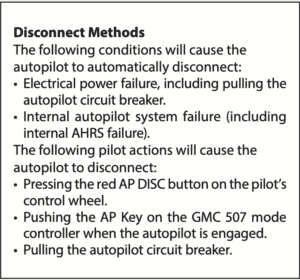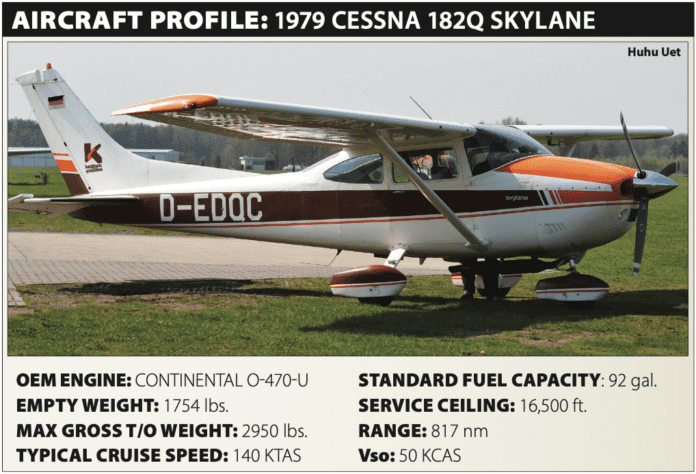As new aircraft and avionics become more sophisticated and capable, a pilot’s learning curve becomes more complicated. Understanding how and why things work the way they do is a critical part of our training and study. Brian Sagi’s article beginning on page 12, “Automation Misbehavior,” explores some of the ramifications and remedial actions pilots should know when their equipment malfunctions. But according to the NTSB, that’s not what happened in the accident we’re about to probe.
Of course, it’s rather easy and perhaps appropriate to blame human error when something goes tragically wrong with an airplane that seemingly was performing as designed. It’s not the first time and it won’t be the last that undiscovered or obliterated evidence resulted in defaulting to blaming the humans for a bad outcome. But this accident should serve as an attention-getter for those of us who might be a little behind in learning about the sophisticated equipment in our panels, even if it’s been there a while and is seemingly well-understood.
The facts are relatively straightforward: A private pilot and a flight instructor were on a training flight, checking out the part-owner on the new-to-them airplane. After what appears to have been a typical low-level training session, the pair climbed to altitude and slowed, presumably to perform a stall series. It didn’t go well, and the airplane ended up plunging to the ground, seemingly out of control, and was destroyed. Both aboard died in what appears to have been an unsurvivable accident. But it boggles the mind that two pilots could have so spectacularly failed to control their descent. Let’s look at the details.
BACKGROUND
On February 2, 2021, at 1744 Central time, a 1979 Cessna 182Q Skylane was destroyed when it collided with terrain near Hackberry, La. The private pilot (male, 55) and flight instructor (male, 55) were fatally injured. Visual conditions prevailed for the training flight.
After several maneuvers near the Gulf coast, the accident airplane flew north, climbing and accelerating. Upon reaching about 4500 feet agl, the airplane’s speed dropped and it began to slowly descend before entering a rapid descent until the final ADS-B data point. In the last 18 seconds of recorded data, the airplane made a right turn and descended at a rate of about 11,250 fpm.
Two witnesses in separate locations observed the airplane come straight down, nose-first to the ground. One witness reported that no smoke was coming from the airplane, and he never saw the cockpit. Both witnesses reported the engine sound was loud.
The airplane impacted soft, muddy terrain, creating an impact crater about 15 feet deep, which contained a majority of the airplane’s components, including the engine, propeller, fuselage and empennage. A debris field containing the wings and smaller components was spread about 40 yards from the crater.

As Brian Sagi notes in his article “Automation Misbehavior,” which opens on page 12 of this issue, many newer airplane designs lack a manual trim control. The 1979 Cessna 182Q in this month’s accident is not one of them, however. So it’s hard to blame the loss of control on runaway trim alone. The box at right reproduces the Garmin POH/AFM supplement’s guidance on disconnecting the GFC500.
Of course, it’s unlikely we’ll pull out the POH when the autopilot’s electric trim feature soils the bed, but we should know enough to just turn off the avionics master switch and, if that doesn’t work, the ship’s master, if the procedures described at right don’t work. In theory at least, doing so removes all power from everything, allowing recovery with the manual trim wheel.
That didn’t happen in this accident, nor apparently did the pilots reduce engine power or take any other remedial steps. A lot of unanswered questions remain.
INVESTIGATION
The private pilot had recently purchased a share of the accident airplane and was training to receive complex and high-performance aircraft endorsements. The day before the accident, one of the co-owners was in the back seat of the airplane when the two accident pilots conducted a training flight. He stated that the pilot completed the flight maneuvers well and he did not notice anything of concern.
The airplane was equipped with a Garmin GFC500 automatic flight control system (AFCS) autopilot, which featured electronic stability and protection (ESP). According to the NTSB, Garmin’s documentation says the ESP function provides a “soft barrier to keep the airplane within the desired operating envelope when the autopilot is not engaged. When the AFCS senses that the airplane is near the defined operating limit in pitch attitude, roll attitude, high airspeed, or low airspeed, the ESP function will automatically engage one or more servos to nudge it back to the nominal operating envelope.”
The ESP uses the same sensors, processors and actuators as the AFCS autopilot, but again according to the NTSB, it is a separate function of the equipment. “ESP can be easily overpowered by the pilot and can be disabled using the autopilot disconnect button. ESP is a feature that is intended to monitor the airplane and provide control input feedback when necessary to discourage operating the airplane at potentially unsafe attitudes and/or airspeeds,” the NTSB’s preliminary report said.
According to one of the other airplane owners, during practice stall maneuvers, the autopilot circuit breaker needed to be pulled in order to complete the maneuver. “He added that, even if the autopilot is not engaged, this autopilot safety feature is still in effect unless the circuit breaker is pulled,” the NTSB said. “On the day before the accident, when he was a passenger in the back of the airplane, he observed the accident pilots pull the autopilot circuit breaker before completing maneuvers.”
Examination established flight control cable continuity for all flight control surfaces through tensile overload separations in several locations. The fuel selector valve was found in the “both” position. Two of the propeller blades remained attached to the propeller hub and exhibited S-bending and curling. Examination of the engine and airframe did not reveal any preimpact anomalies.
PROBABLE CAUSE
The NTSB determined the probable cause(s) of this accident to include: “The flight instructor did not maintain control of the airplane during training maneuvers, which resulted in a rapid, steep descent and impact with terrain.” Lacking any evidence pointing to a systems failure precipitating the final descent, that’s about all the NTSB could do.
Still, the accident report spent a lot of time dwelling on the airplane’s autopilot system and flight envelope protection modes, acknowledging that there’s no reason for the CFI’s failure to maintain control and hinting that there may be more going on here than human error.
Even if one of them was aboard for his endorsements to command a Cessna 182, both pilots were certificated and presumably competent. Why they allowed—or forced—the airplane to enter a high-speed dive all the way to the ground isn’t explained by the NTSB. But the final report spent a lot of time discussing the GFC500 and its ESP feature. Why?




